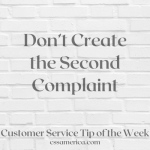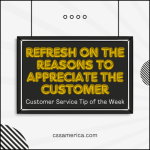Freddie was a new business owner in town. He was launching a franchise, had acquired some funding from a local bank, and was in search of staff who cared about customer service.
All the while, he was in the process of renovating a storefront for his business, so he was dealing with the local municipality a lot on plans and inspections. But to Freddie, the process was shockingly easy. Well, maybe the process wasn’t easy, but going through the process was easy.
For the most part, submitting plans through the web portal, getting comments on plans and getting inspections scheduled and conducted was typical. Getting results of the inspections and correcting issues – these were all fairly standard processes – sometimes cumbersome, sometimes clunky or not self-evident.
The Secret Weapon
But Freddie had a secret weapon; the municipality in this community had a navigator position. This was essentially a governmental point person to help business owners and developers work through all the different processes that they had to deal with for remodels, renovations, new development, etc. No matter what area of the city or county that Freddie was dealing with, the navigator helped him through the process.
The navigator not only met with Freddie upfront when he first submitted his plans, but the navigator conducted what was akin to an onboarding session like you would do for a new employee. The navigator set up bi-weekly calls with Freddie to ensure he was on track, and would have as-needed communications to help through issues.
See Him as an Individual
The navigator learned about Freddie as well as learning about his project. The navigator would send Freddie information in advance of when he needed it to help him to prep for the next step and make sure he kept things on time and on budget.
The navigator’s name was Helen. And while this seemingly fairy tale experience did not end with the main characters getting married, it did end with Helen having started and nurtured a relationship on behalf of the municipality with the new business owner.
Think about the new customers you have and how they and their needs are so different than those of your existing customers. Intentionally map out a process and approach to help them navigate any pitfalls. Dedicate resources to onboard these clients, nurture relationships, and grow your business by helping them to grow their success with a great customer experience.
Nurture New Relationships.
Signup for FREE Tips! Contact Us More Resources for You Visit Our Home Page
























